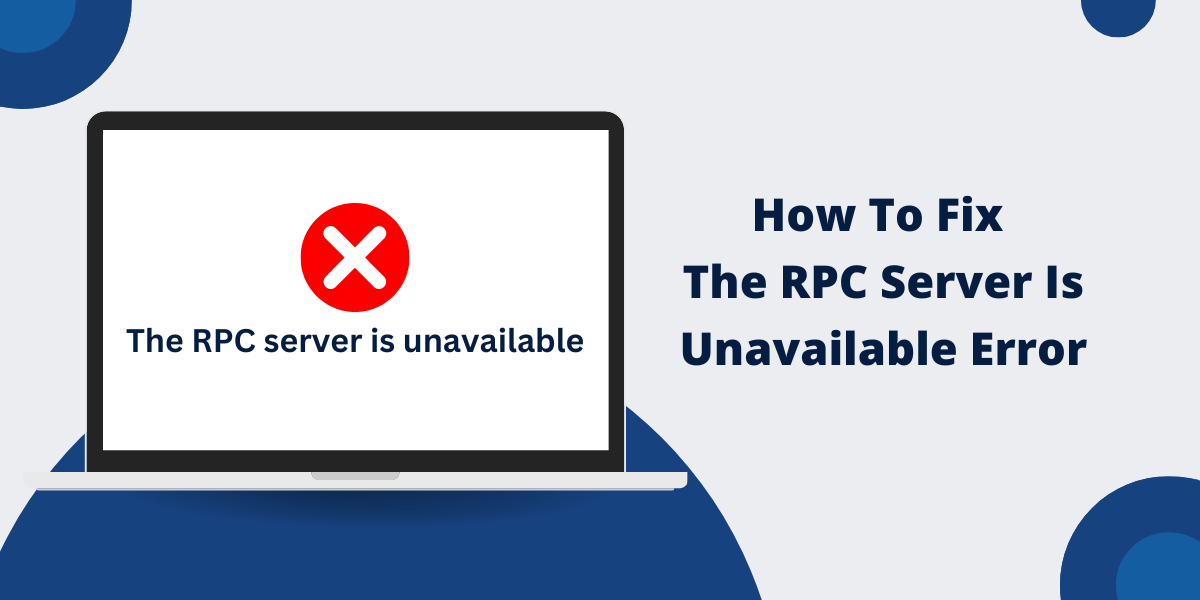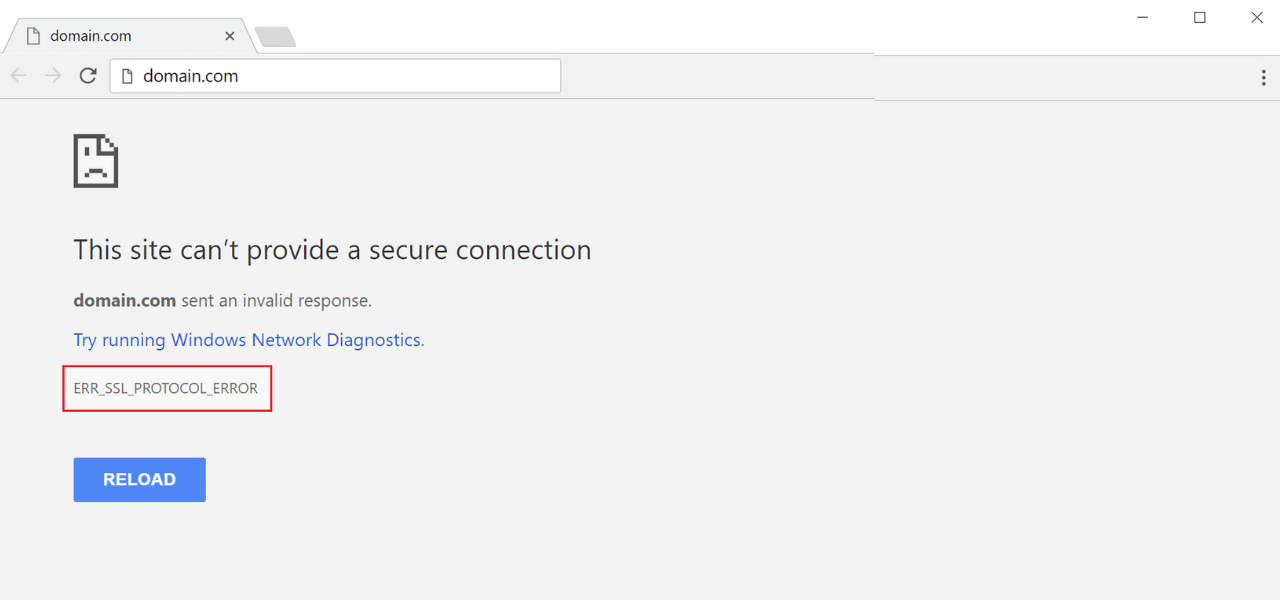What Does “RPC server is unavailable” Error Mean?
The “RPC server is unavailable” error is a common issue that can prevent you from accessing shared folders and printers on your network. This error occurs when the Remote Procedure Call (RPC) service is not running properly. The RPC service enables programs on networked computers to request services from programs on other networked computers.
When the RPC server is unavailable, applications that rely on it will fail with errors. Fixing this issue requires investigating why the RPC service has stopped and then restarting it. With some effort, you can resolve the “RPC server is unavailable” error and restore access to your networked resources.
Key Takeaways
- The “RPC server is unavailable” error prevents access to shared folders and printers on a network.
- It occurs when the Remote Procedure Call (RPC) service is not running properly on a computer.
- Fixes involve investigating why RPC has stopped, restarting the service, and troubleshooting network issues.
- Methods to fix it include restarting the RPC service, enabling it, checking dependencies, updating network drivers, and resolving firewall blocking.
- Diagnosing the cause requires looking at event logs, services, connectivity, firewalls, and hardware issues.
- Resolving this error restores access to networked folders and printers and allows RPC-dependent programs to function.
What is the RPC Server and the RPC Error?
The RPC server is a background process that runs on Windows machines to facilitate remote procedure calls between computers. It allows a program on one networked computer to seamlessly request services and data from a program on another computer as if it were running locally.
Some key points about the RPC server:
- It is implemented via the Remote Procedure Call (RPC) service in Windows.
- Allows shared access to folders, printers, and inter-process communication between networked computers.
- Applications such as file explorers, office programs, printers, etc, use RPC.
- Works on top of TCP/IP or other network protocols.
- It can be distributed across multiple computers.
The “RPC server unavailable” error occurs when this RPC server process is not functioning properly. Some typical symptoms include:
- Unable to access or open shared folders and files over a network.
- Networked printers offline or unable to print.
- Programs that rely on RPC APIs fail with errors.
- A general inability to communicate between programs on networked computers.
This error prevents remote procedure calls from completing and disrupts access to any networked resource that depends on RPC. Fixing this issue requires getting the RPC server back up and running again.
What are the Causes of RPC Server Unavailable Error?
There are a few common causes behind why the RPC server may become unavailable:
- RPC Service Not Running
- Firewall Blocking RPC
- Network Connectivity Issues
- Outdated or Corrupt Drivers
- Dependent Services Not Running
- Damaged Network Configurations
- Hardware Failures
RPC Service Not Running
The most straightforward cause is that the Remote Procedure Call (RPC) service is not started on the computer. The service could have been stopped manually, set to disabled, or failed to start up properly on reboot. Checking this service and restarting it is often the quickest solution.
Firewall Blocking RPC
Another culprit can be firewall software blocking the RPC traffic. RPC normally communicates over port 135 and randomly assigns high ports. Overly restrictive firewall policies can interfere with this and make the RPC server inaccessible.
Network Connectivity Issues
For RPC to work, the underlying network must function correctly. Problems like a disconnected cable, DNS issues, VPN disconnections, or network hardware failures can make the RPC server unreachable. Resolving any network connectivity problems is key.
Outdated or Corrupt Drivers
Faulty, old, or corrupt drivers for network adapters, storage controllers, etc. can also disrupt communication between RPC and other networked computers. Keeping drivers up to date or reinstalling them can help in some cases.
Dependent Services Not Running
RPC relies on multiple services, such as the Remote Procedure Call (RPC) Locator and DCOM Server Process Launcher. Issues with those dependencies can lead to the RPC server unavailable error.
Damaged Network Configurations
Damage to network settings, incorrect configurations, or problems with Active Directory can prevent RPC from operating normally across networked machines. This may require registry tweaks, Group Policy fixes, or AD troubleshooting.
Hardware Failures
Lastly, bad memory, failing hard drives and other hardware problems can crash the RPC service. Diagnosing hardware issues through system logs and utilities can identify such cases. Replacing defective hardware is the ultimate solution.
How to Fix the RPC Server is Unavailable Error
With many potential causes, fixing the “RPC server unavailable” error requires investigating the problem and applying the right solution. Try these methods to resolve it:
- Restart the RPC Service
- Enable RPC Service
- Reinstall or Update Network Drivers
- Allow RPC Through The Firewall
- Check RPC Service Dependencies
- Reset Networking Components
- Check For Network Connectivity Issues
- Update Network Adapter Drivers
- Check System and Application Logs
- Consider RPC Service Workarounds
Restart the RPC Service
The simplest initial fix is to restart the Remote Procedure Call (RPC) service on the affected computer:
- Open the Run command (Windows + R) and type “services.msc”.
- Scroll down and locate the “Remote Procedure Call (RPC)” service.
- Right-click it and choose Restart.
This restarts the service cleanly and can resolve many cases where it just failed to start up properly for some reason.
If restarting alone doesn’t work, also try stopping and disabling the service, doing a reboot, and then enabling and starting the service again. This clears out any stuck instances of the service.
Enable RPC Service
If the RPC service is set to Disabled or Manual Startup, that will also lead to the “RPC unavailable” error. Check its Startup Type in the services console:
- Open services.msc and find the RPC service.
- Double-click the service and go to the General tab.
- Set the Startup Type to Automatic. Press OK.
This ensures the RPC server starts up on every system boot as required. Now, try restarting the service and check if the error is resolved.
Reinstall or Update Network Drivers
Outdated or corrupted network drivers can prevent RPC communication between computers. To rule this out:
- Open Device Manager and expand the Network Adapters section.
- Right-click each network adapter and select Update driver.
- Manually search for driver updates from your hardware vendor.
- Consider uninstalling and then reinstalling the adapters if updates don’t help.
Updating to the latest drivers often fixes RPC server unavailable issues caused by driver errors.
Allow RPC Through The Firewall
One oversight is firewall software blocking remote procedure call traffic on port 135 and high ports. RPC will fail if these ports are blocked. To check:
- Open firewall software, such as Windows Firewall or a third-party firewall.
- Create new inbound rules to allow traffic on TCP & UDP port 135.
- Also allow access to random high TCP & UDP ports above 1024. Apply the rules.
- Alternatively, create a blanket rule to allow all traffic between local network computers.
Adding these firewall exceptions permits RPC communication and resolves blocked RPC server issues.
Check RPC Service Dependencies
The RPC service relies on multiple secondary services, such as the Remote Procedure Call (RPC) Locator and the DCOM Server Process Launcher. If those services fail, the RPC unavailable error can occur.
To troubleshoot this:
- Open the Command Prompt as admin and run “sc queryex type= service” to list all services.
- Check if the RPC locator and DCOM launcher services are running.
- If not, open services.msc and restart them or set their startup type to Automatic as needed.
- Also, check for any other dependencies for the RPC service that may have stopped.
Restarting any failed dependencies can restore normal RPC operation in such cases.
Reset Networking Components
Resetting all networking components may help if incorrect network configurations are causing RPC issues:
- Open Command Prompt as admin and run “ipconfig /flushdns” to flush DNS cache.
- Run “netsh int ip reset” to reset TCP/IP stack.
- Run “netsh winsock reset” to reset the Winsock catalog.
- Restart the computer after running these commands.
Resetting networking stacks, network adapters, and protocols can clear out any faulty network settings that disrupt RPC.
Check For Network Connectivity Issues
Intermittent network disconnects or hardware issues can also manifest as the RPC server unavailable error. To diagnose problems:
- Check network cables and connectors for any loose connections.
- Verify the network is up by pinging other computers from Command Prompt.
- Open Network Connections and disable/re-enable adapters to reset them.
- Scan network logs for frequent disconnects or connection issues.
- Reboot routers, modems, access points, and other network hardware if needed.
- Consider replacing suspect network cables and faulty adapters, switches, or routers.
Addressing any network hardware or connectivity issues can resolve RPC errors caused by them.
Update Network Adapter Drivers
Similarly, outdated or incompatible drivers for network adapters can disrupt RPC communication between computers. To update them:
- Open Device Manager, expand Network adapters, and note existing adapters.
- For each one, right-click and select Update driver.
- Manually download updated drivers from your hardware manufacturer’s website.
- Use the latest compatible drivers. Remove, then re-add adapters if necessary.
Updating or rolling back network adapter drivers often resolves driver-related RPC server issues.
Check System and Application Logs
Analyzing logs can provide clues to what is causing the RPC server unavailability:
- Open Event Viewer and check the System and Application logs for frequent errors.
- Look for events related to the RPC service, network connectivity, services crashing, firewall blocks, etc.
- Google error codes to understand the context and troubleshoot accordingly.
- Review logs after trying fixes to see if error events are resolved.
Diagnosing log entries this way pinpoints the root cause, whether it is a service, networking, firewall, or hardware issue.
Consider RPC Service Workarounds
If no other solutions fix the problem, you can try workarounds like relying on SMB instead or using the TCP/IP protocol for RPC:
- Access remote files using \computer\share\file paths instead of mapped drives.
- Edit the registry at HKEY_LOCAL_MACHINE\SOFTWARE\Policies\Microsoft\Windows NT\RPC to set EnableAuthEpResolution to 0.
- Disable the RPC service and enable SMB protocols like NetBIOS over TCP/IP.
These tweaks utilize SMB, DNS, or TCP/IP instead of RPC as a workaround for some network functionality.
How to Prevent Future RPC Unavailable Errors
To avoid frequent RPC service issues in the future:
- Keep network adapter and storage drivers updated to prevent malfunctions.
- Maintain static IP addresses and DNS settings where possible.
- Configure firewalls properly to allow RPC traffic between networked computers.
- Set the RPC service to Automatic startup and check it restarts on reboot.
- Periodically restart the RPC service and dependencies to clear any stuck instances.
- Use VPNs instead of direct remote desktop connections.
- Isolate and replace any faulty networking hardware like cables, routers, switches, etc.
- Test network connectivity regularly via ping, port tests, etc.
Final Thoughts
The “RPC server unavailable” error will disrupt access to network resources that rely on RPC for communication between computers. Investigating the root cause – whether a service, network, firewall, hardware, or driver issue – and applying the appropriate fix is crucial for resolving RPC unavailability issues. Following best practices for updating drivers, monitoring services and maintaining network hardware will minimize future occurrences of this error.
Frequently Asked Questions (FAQ) About RPC Errors
Here are some common questions and answers about the RPC server unavailable error:
Why does my computer say the RPC server is unavailable?
This error occurs when the Remote Procedure Call (RPC) service on your computer is not running correctly. It prevents access to shared folders, printers, and programs that rely on RPC to communicate on a network.
How do I fix the inability to connect to the RPC server?
Some things to try are restarting the RPC service, allowing it through firewalls, updating network drivers, checking hardware issues, ensuring dependencies like the RPC locator are running, and fixing any network problems.
Why is my printer offline due to the RPC server?
Network printers rely on RPC to communicate between your computer and the print server. If RPC has issues, printers will disconnect and appear offline. Fixing the RPC server error will resolve this.
How do I get RPC working again?
Enabling the RPC service, restarting it and its dependencies, allowing firewall access, updating network drivers, checking for hardware issues, and restoring network connectivity can help the RPC function again.
Why do I keep getting the RPC server unavailable?
Frequent RPC issues may be caused by an underlying problem, such as faulty network hardware, repeatedly disabled service set to Manual, outdated drivers, or firewall misconfigurations. Addressing these root causes prevents further recurrences.
Should I disable RPC?
No, disabling RPC will cause connectivity issues with shared folders, networked printers, and programs that need it to communicate. The proper solution is to fix the underlying issue causing the RPC server error.
What can I use instead of RPC?
Workarounds include using direct SMB paths instead of mapped drives or using TCP/IP for connectivity. But ideally RPC should be fixed rather than disabled.

Priya Mervana
 Verified Web Security Experts
Verified Web Security Experts
Priya Mervana is working at SSLInsights.com as a web security expert with over 10 years of experience writing about encryption, SSL certificates, and online privacy. She aims to make complex security topics easily understandable for everyday internet users.



